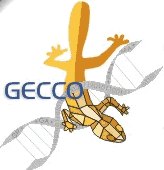

June 26 - 30, 2004
Saturday to Wednesday
Seattle, Washington, USA
Session: |
LBP - Late Breaking Papers |
Title: |
Improving Evolutionary Algorithms with Multi-representation Island Models |
Authors: |
Zbigniew Skolicki |
Abstract: |
We present an island model that uses different representations in each island. The model transforms individuals from one representation to another during migrations. We show that such a model helps the evolutionary algorithm to escape from local optima and to solve problems that are difficult for single representation EAs. We illustrate this approach with a two population island model in which one island uses a standard binary encoding and the other island uses a standard reflective Gray code. We compare the performance of this multi-representation island model with single population EAs using only binary or Gray codes. We show that, on a variety of difficult multi-modal test functions, the multi-representation island model does no worse than a standard EA on all of the functions, and produces significant improvements on a subset of them. |
HomeProgramSearchAuthor Index
SponsorsCommitteeContact Us
